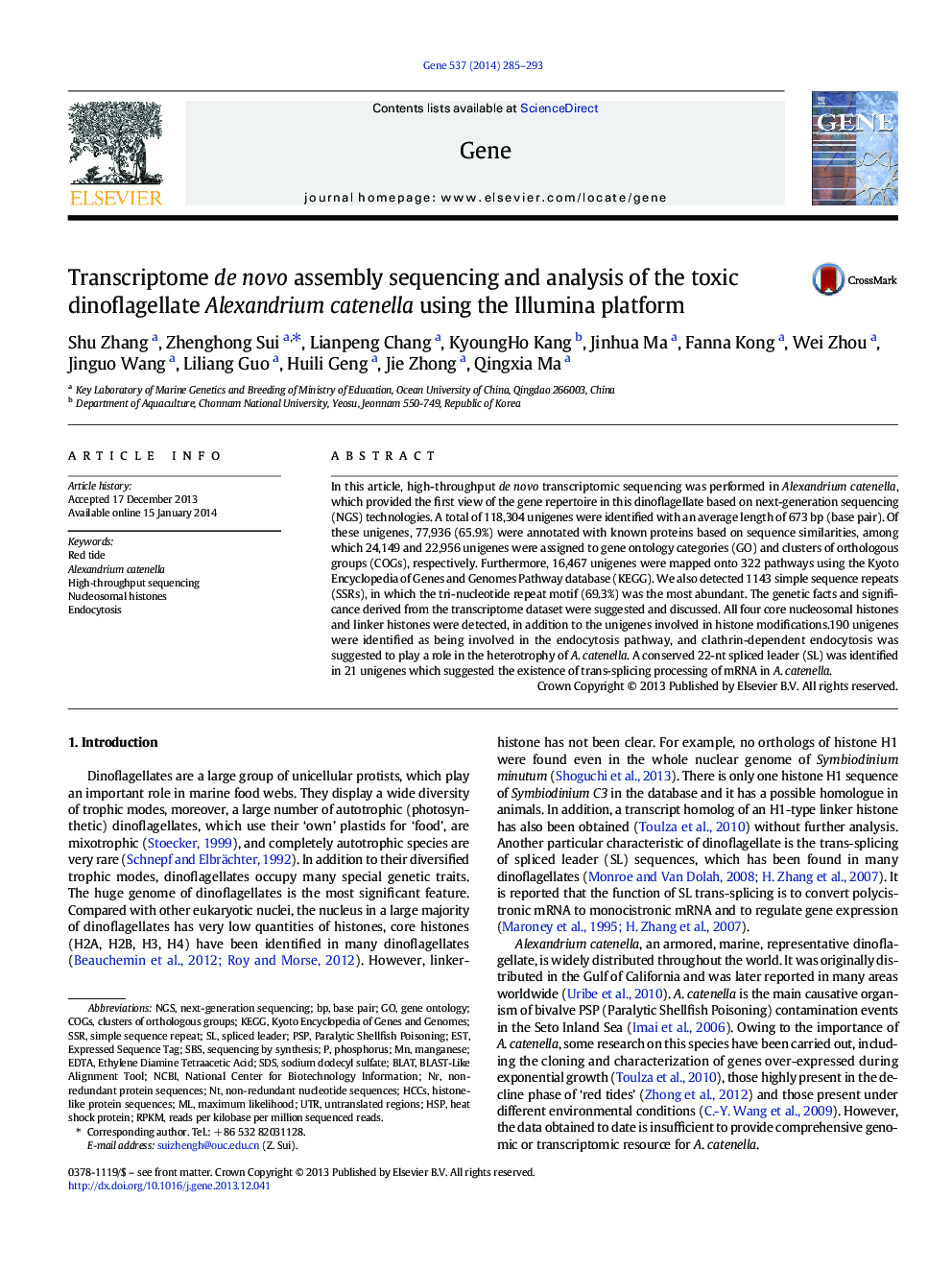| Article ID | Journal | Published Year | Pages | File Type |
|---|---|---|---|---|
| 2816683 | Gene | 2014 | 9 Pages |
•Next-generation sequencing generated 118,304 unigenes for transcriptome.•Histone H1 genes in dinoflagellates may have ancient origins.•Discovered potential endocytosis pathway of dinoflagellates in molecular level•Unusually, CG motif was the most dominant among the di-nucleotide repeat motifs.
In this article, high-throughput de novo transcriptomic sequencing was performed in Alexandrium catenella, which provided the first view of the gene repertoire in this dinoflagellate based on next-generation sequencing (NGS) technologies. A total of 118,304 unigenes were identified with an average length of 673 bp (base pair). Of these unigenes, 77,936 (65.9%) were annotated with known proteins based on sequence similarities, among which 24,149 and 22,956 unigenes were assigned to gene ontology categories (GO) and clusters of orthologous groups (COGs), respectively. Furthermore, 16,467 unigenes were mapped onto 322 pathways using the Kyoto Encyclopedia of Genes and Genomes Pathway database (KEGG). We also detected 1143 simple sequence repeats (SSRs), in which the tri-nucleotide repeat motif (69.3%) was the most abundant. The genetic facts and significance derived from the transcriptome dataset were suggested and discussed. All four core nucleosomal histones and linker histones were detected, in addition to the unigenes involved in histone modifications.190 unigenes were identified as being involved in the endocytosis pathway, and clathrin-dependent endocytosis was suggested to play a role in the heterotrophy of A. catenella. A conserved 22-nt spliced leader (SL) was identified in 21 unigenes which suggested the existence of trans-splicing processing of mRNA in A. catenella.
